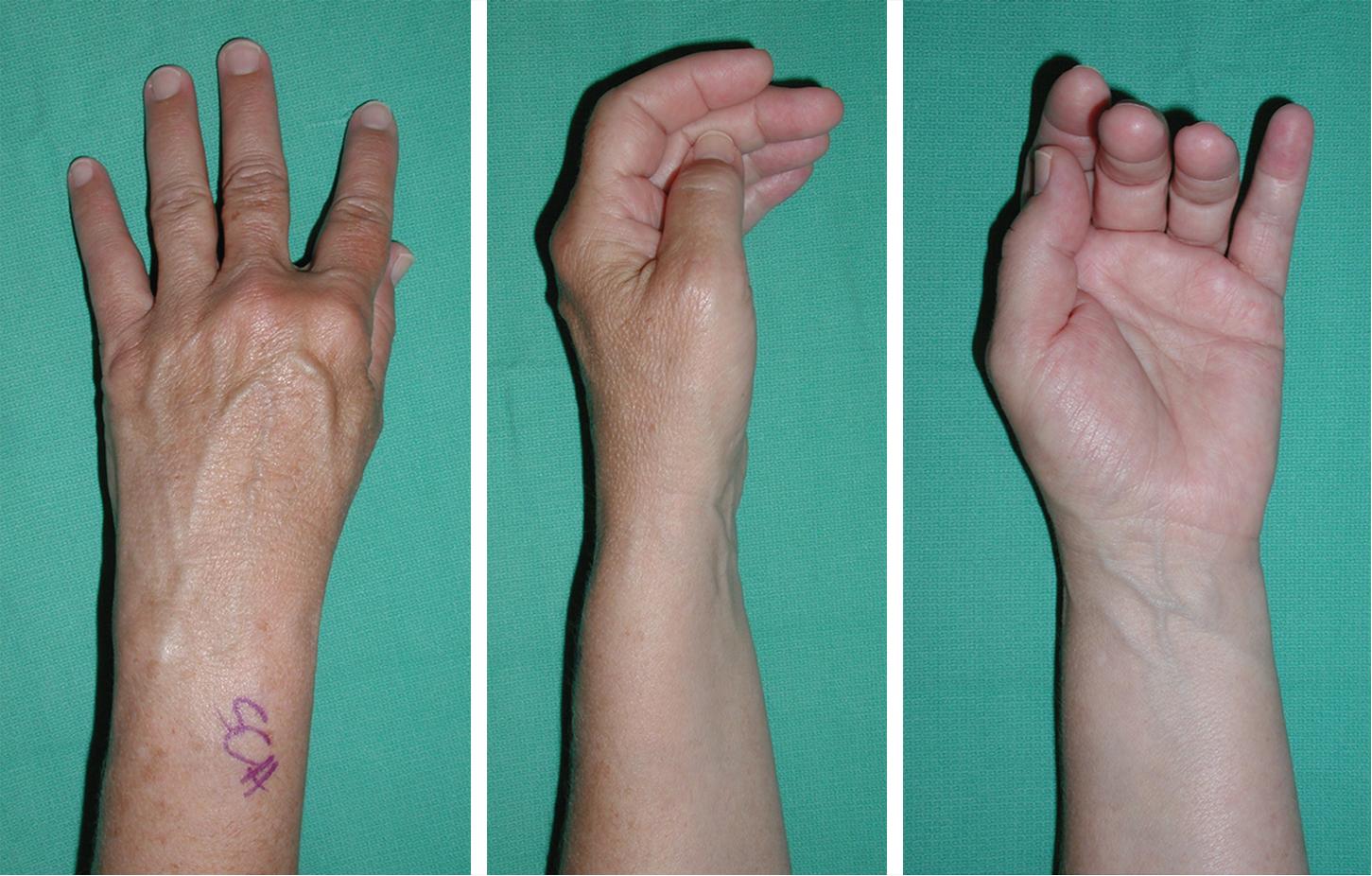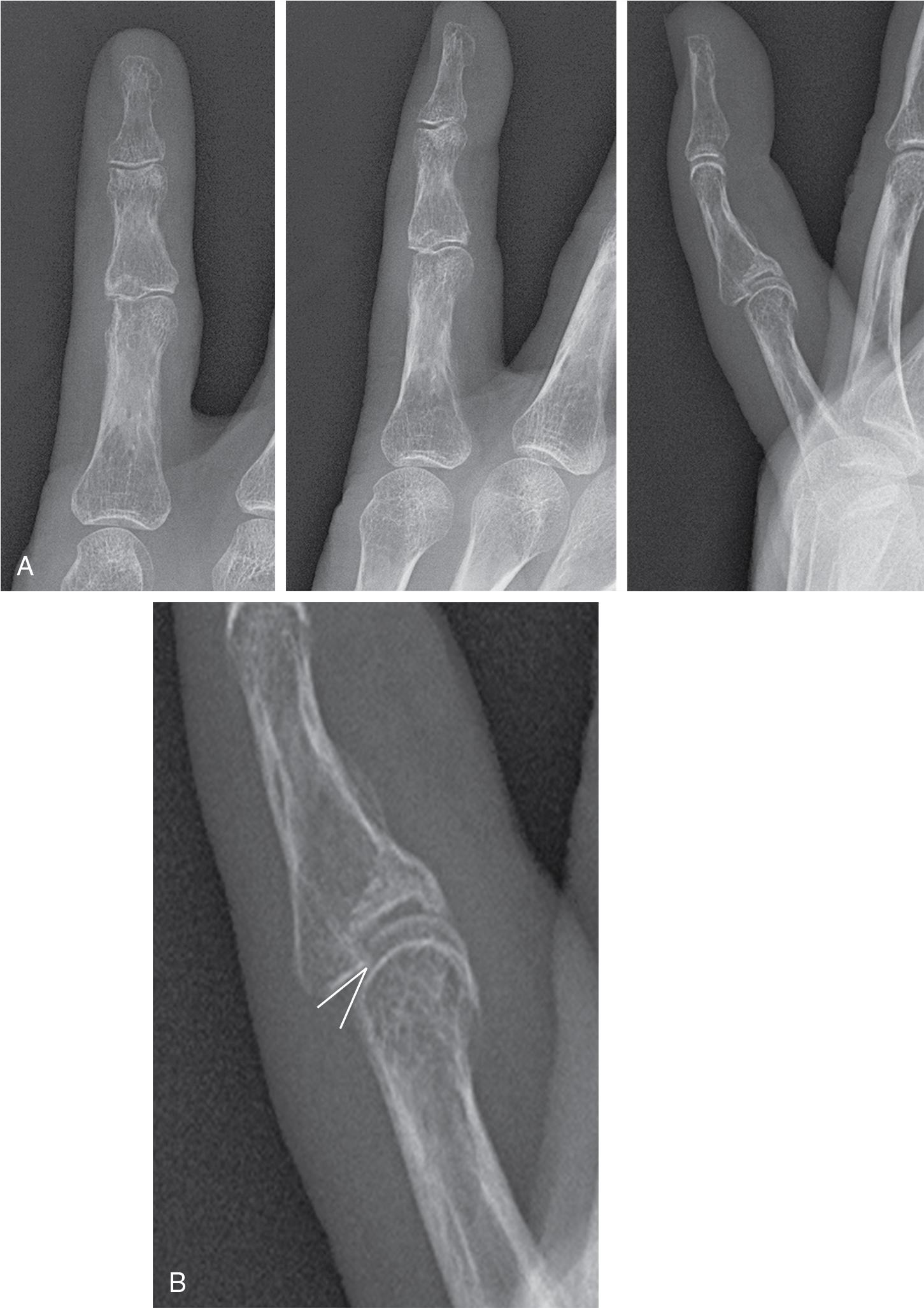Physical Address
304 North Cardinal St.
Dorchester Center, MA 02124
Indications for this procedure include fracture dislocations of the proximal interphalangeal (PIP) joint that are unstable and in which the volar lip (buttress) of the middle phalanx base cannot be salvaged or reconstructed with other means.
Volar plate arthroplasty can be used for acute or chronic cases. Ideally, the articular surface of the head of the proximal phalanx is preserved.
Acute injuries will present with tenderness and swelling of the digit. Range of motion (ROM) will be limited.
Chronic injuries may present with stiffness and pain, often after what was believed to be a trivial “finger jam” injury ( Fig. 12.1 ).

Plain radiographs in three views (posteroanterior, oblique, and lateral) should be obtained. A properly aligned lateral view is especially important for identifying any subluxation ( Fig. 12.2A ).

In cases with subtle subluxation, the middle phalanx shifts relatively dorsal to normal joint alignment, and a “V sign” can be seen at the dorsal side of the joint, highlighting the incongruity of the joint surfaces (see Fig. 12.2B ).
Become a Clinical Tree membership for Full access and enjoy Unlimited articles
If you are a member. Log in here